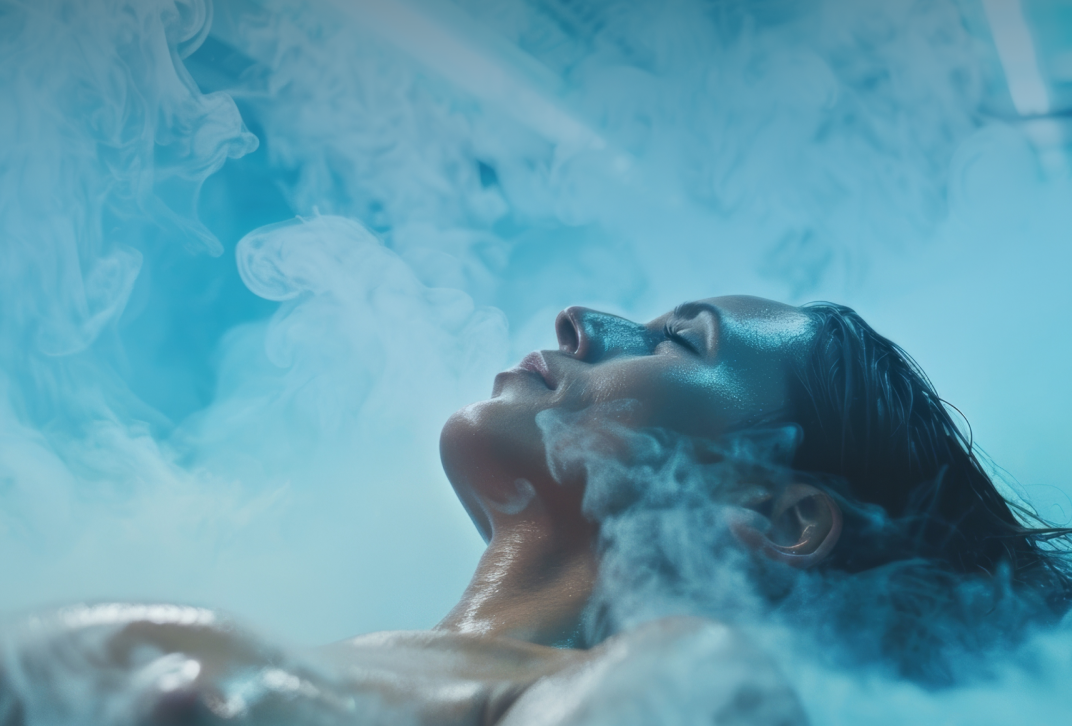

Science-Backed Therapies

At Oxydise, every therapy we offer is grounded in science. We don’t rely on trends or wellness hype—we rely on clinical data, peer-reviewed studies, and decades of biomedical research. Whether you're an athlete, a wellness enthusiast, or someone navigating chronic health challenges, it's essential to know that the technologies supporting your recovery have been rigorously tested and validated.
Let us explore the research behind the therapies at the heart of Oxydise’s approach: Hyperbaric Oxygen Therapy (HBOT), Red Light Therapy, Cryotherapy, and Dry Float Therapy. These technologies are not only making headlines in performance and wellness—they're making a measurable difference in outcomes, backed by a growing body of credible evidence.
Hyperbaric Oxygen Therapy (HBOT)
The body requires oxygen to heal, and HBOT takes this principle to new heights. By delivering pure oxygen in a pressurized chamber, the body absorbs far more than is possible at normal atmospheric conditions. This oxygen saturation reaches deep into damaged tissues, where it fuels cellular repair, reduces inflammation, and promotes regeneration.
HBOT continues to gain recognition for its applications in both medical recovery and sports performance. A recent 2023 study published on the National Institutes of Health platform found that even a single session of HBOT following a football match improved short-term recovery markers in elite youth athletes (source).
In earlier work, researchers also demonstrated that HBOT can reduce senescent cells and promote tissue rejuvenation in aging adults. These findings offer exciting implications—not just for injury recovery, but for longevity and overall cellular health.
Beyond physical healing, HBOT is also showing promise in cognitive recovery—particularly in patients who have experienced mild traumatic brain injuries. The increased oxygen delivery can stimulate neuroplasticity, improve focus, and help clear brain fog, making it a potentially powerful tool for both athletes and individuals dealing with neurological conditions.
Red Light Therapy (Photobiomodulation)
Red Light Therapy works on a deeper level—inside the mitochondria of your cells. By targeting the key enzyme in the energy production pathway, it boosts ATP output and reduces oxidative stress, two pillars of healthy recovery.
Recent research continues to validate Red Light’s therapeutic impact. A 2023 study on whole-body photobiomodulation found it significantly enhanced post-exercise recovery without altering performance during high-intensity anaerobic exercise (source). This is important for athletes who need recovery without compromising output.
NASA was among the first to explore this technology in space medicine, using light therapy to support tissue healing in astronauts. Today, it's used widely to support muscle recovery, reduce joint pain, and even accelerate post-concussion rehabilitation.
Red Light Therapy has also been shown to support skin healing, collagen production, and even hormonal balance, making it a versatile modality that benefits more than just muscles. From post-operative healing to managing chronic inflammation, its ability to stimulate natural repair processes is unmatched.
Cryotherapy
Cryotherapy delivers a controlled physiological shock that jumpstarts the body’s repair systems. A short exposure to extreme cold prompts vasoconstriction, followed by rapid blood flow once the session ends—bringing oxygen and nutrients to fatigued tissues while flushing out inflammation.
In a 2022 study, researchers explored how multiple cryosauna sessions reduced muscle stiffness and lowered blood biomarkers related to soreness following intense physical activity (source). The conclusion was clear: cryotherapy can meaningfully support the body’s recovery from exercise-induced muscle damage.
But the benefits extend beyond the physical. Cryotherapy has also been linked to the release of norepinephrine and endorphins, which help reduce stress, elevate mood, and improve sleep. This makes it a powerful tool not only for athletes, but also for those managing anxiety, fatigue, and chronic stress.
Dry Float Therapy
Driifloat Therapy draws on the well-established research base of floatation REST (Restricted Environmental Stimulation Therapy). The principles are simple but powerful: reduce sensory input, create a weightless environment, and allow the nervous system to drop into deep parasympathetic recovery.
Most recently, a 2023 preprint study found that dry floatation sessions resulted in significant improvements in relaxation, heart rate variability, and reduced stress levels in healthy adults (source). This research builds on decades of sensory deprivation studies and suggests that Driifloat may be an effective tool for enhancing recovery and nervous system balance without full water immersion.
The therapeutic benefits of Driifloat go far beyond relaxation. It provides a critical reset for those living with constant sensory overload, helping to improve focus, reduce muscle tension, and foster mental clarity. Clients often report sleeping better, thinking more clearly, and feeling more emotionally balanced after regular sessions.
A Smarter Standard of Care
At Oxydise, we offer therapies that are both scientifically grounded and thoughtfully applied. Each modality is selected based on its ability to deliver measurable benefits, and our team stays informed by the latest in peer-reviewed research and clinical innovation.
We believe the future of wellness isn’t guesswork—it’s physiology, tested and proven. Our clients trust us not only because our therapies work, but because we understand how to apply them with purpose, precision, and care.








